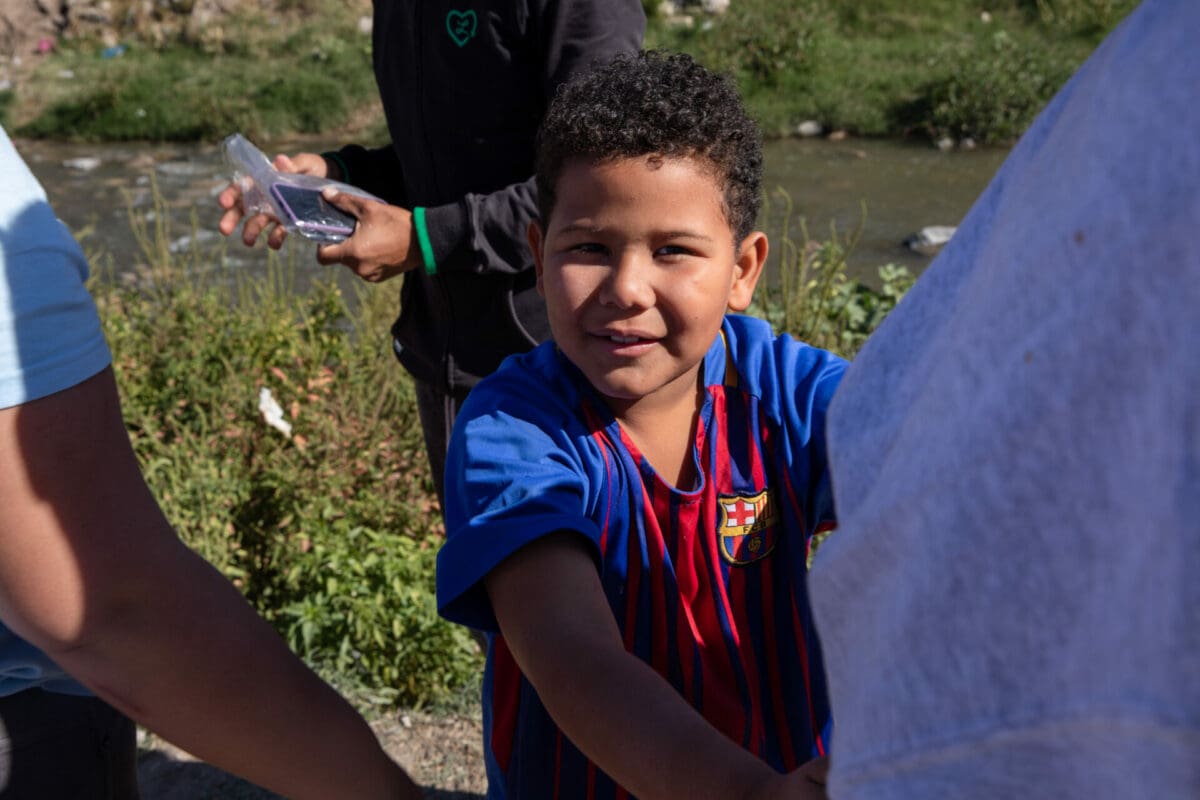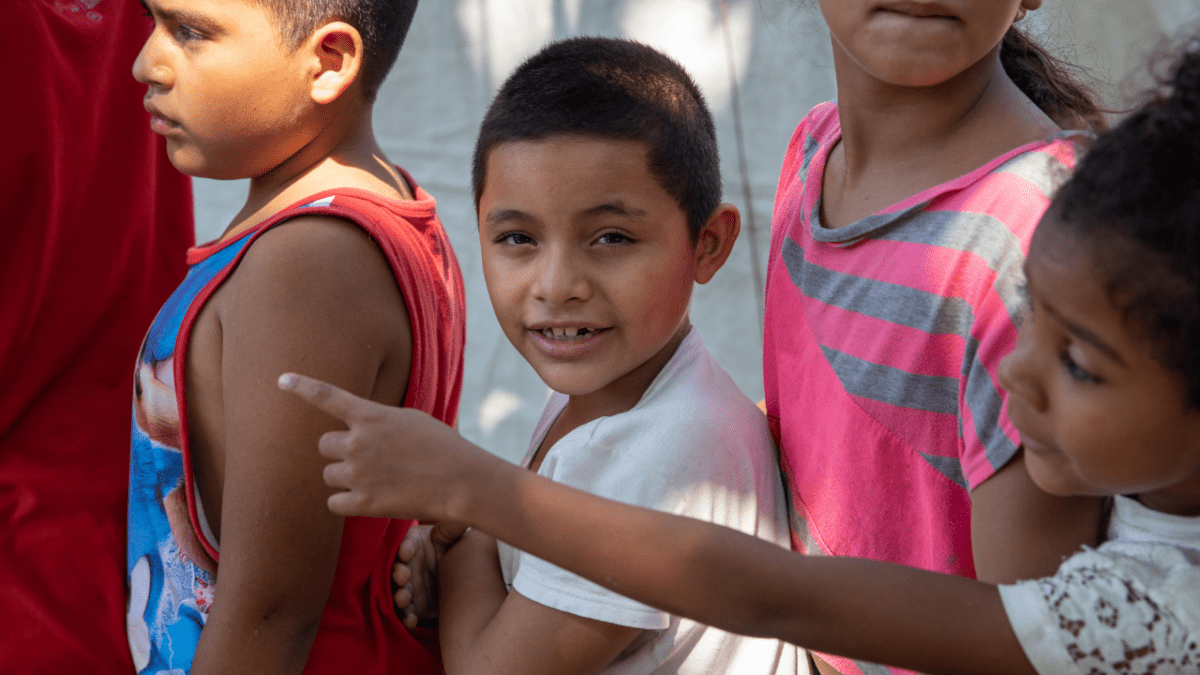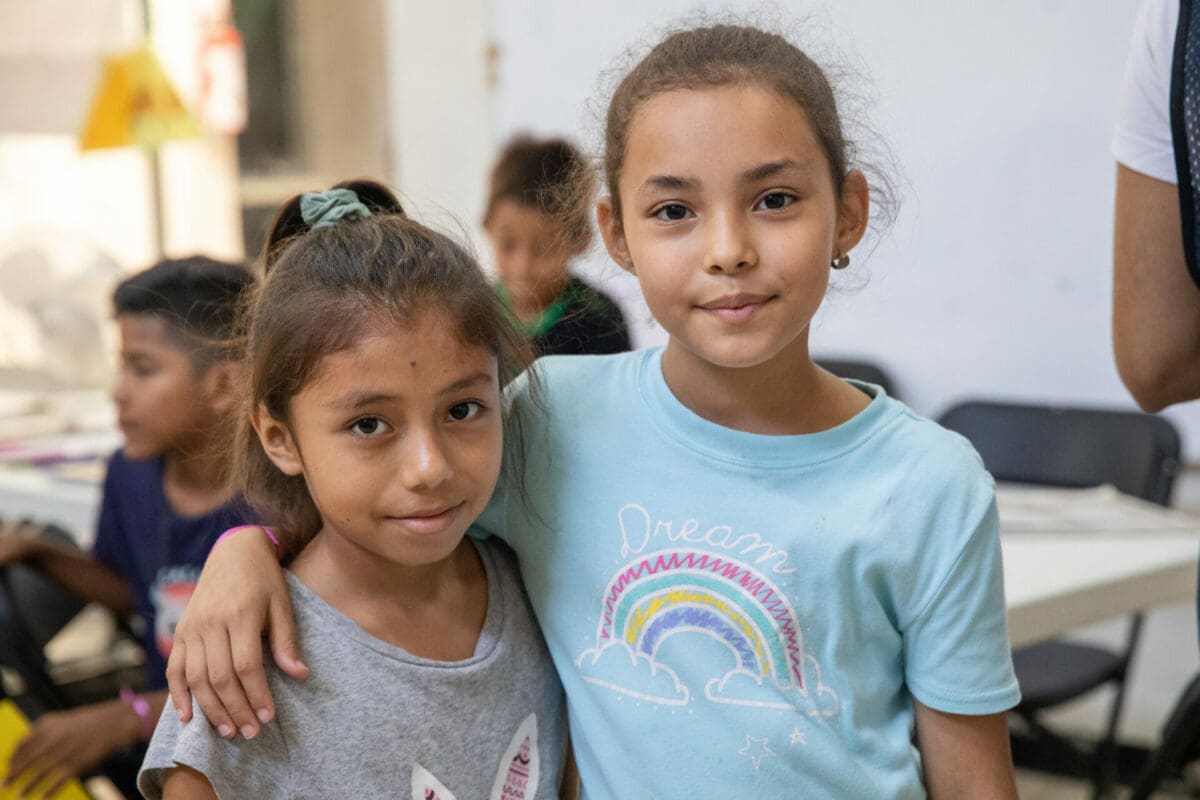For this blog, we had the honor of speaking with Jenny Torres Sanchez, author of We Are Not From Here, an award-winning novel about three unaccompanied children who make the difficult journey from their home country of Guatemala to the United States.
What led you to become a writer?
Before writing full-time, I taught high school language arts and creative writing to mostly 11th-graders. I love that age group. A lot of the reason I write for young people is because I taught young people, because of my students. When we talked about literature in the classroom, I always told them, we’re not just talking about a book. We’re talking about life, about big issues, about people and the human experience. As a teacher, I also saw a lot of students going through rough times and difficult experiences. I saw some of my students carrying this weight. I wanted to write books that addressed those times and those hard issues, topics like grief, family dysfunction, seeing the world crumble and not knowing what to do about it. So that’s what I’ve decided to write about. It’s what interests me, and it’s what inspired me most with my students.
Why did you write this book about unaccompanied children?
I wanted to be honest and also give people hope. This book was hard to write because it’s very honest. And the truth of what’s going on with unaccompanied children is difficult. There’s violence involved. There’s neglect by powers that be. There’s cruelty from people who should be helping. The journey of young people seeking refuge and asylum in the United States is dangerous and violent, and there are a lot of things kids have to witness and experience way too young. I wanted to be honest and include all that in the book.
But I also wanted it to be a book that inspires young people and finds its way to their hearts so that they’re moved—moved to be empathetic, moved to be understood, moved that they are seen for people like Pulga and Pequeña and Chico, and moved to action. Seeing teachers take this book into their classrooms and have these honest conversations, and then seeing students inspired by the stories of children like Pulga, Pequeña and Chico, inspired by these lessons and conversations is really inspiring to me as the writer of this book.
These stories are not easy to tell, but they are of utmost importance to tell. We have to be honest about what’s happening in our world. We have to be honest with our young people. Young people want to talk about these things. They want the truth. They are outraged, rightfully so, about the injustices in our world, and they want to know how we are going to fix it. I’m a big believer in having honest conversations. Being uncomfortable is part of talking about the realities of the world. I really appreciate the adults and teachers who are willing to sit in that discomfort and have these conversations.
Did you have a connection to unaccompanied children before writing the book?
My family is a family of immigrants. I personally did not have to make that dangerous and heartbreaking journey and never want to seem as if I have. My dad is from El Salvador and my mom is from Guatemala, so immigration is a subject very close to my heart. Many of my family members have immigrated to the United States, and they all have their own stories. I grew up hearing these stories. So, this is a personal story to me in that way, not because I went through that, but because my family did. I’ve seen up close and personal the mistreatment my parents have received through the years. Simply for being immigrants, they were treated as if they don’t know anything, being not wanted in this country.
When I saw the stories of these children arriving at our borders, and heard about La Bestia, the train that many migrants ride to get through Mexico, I saw my family. It wasn’t strangers. It wasn’t, “Oh, just these other kids.” It was my family. It was very easy for me to imagine that being my parents, myself, or my children, if I had been born on different soil. So, I felt this really strong need to write this story.
Puerto Barrios, where the book is set, is where my mom is from and where my aunt still lives. I haven’t been there in a long time, but when I was younger, I would go and visit. I fashioned the character Pulga’s house after my aunt’s house. The front patio where he hangs out, the store he goes to, are all based on memories I have of that neighborhood and my aunt’s house.
What was your goal in writing this book?
I wanted to just tell the truth of what I was seeing. I wanted to bear witness. When we started to see what was happening to children, that they were literally being put in cages, we were seeing and reading about it on the news. But to me, as a fiction writer and novelist, it didn’t feel like the whole story. News coverage did not address the depth of this issue and why these children are leaving. I just didn’t want that truth to be overlooked and swept under the rug. I wanted to say this did happen. I saw it happen. It happened to these children.
What is the main takeaway that you hope readers get from the book?
With all my books, I want to leave the reader in a place of thinking. When they’re done with this book, I really want for the story to follow them, not just put it back on the shelf and never think about it again. My hope is that this story will stay with them, and they will carry the story with them in their hearts as they grow up. As they go out into the world, I hope this story affects how they move in the world, how they view the world. That’s my ultimate hope. I also hope that it moves them to action, whether small or big. No action is too small. If everybody who reads this is moved to do something, to learn about organizations like KIND that are out there doing the work, to support them or contribute to them, to one day work for organizations like that or become a lawyer or whatever it may be.
It has been so impactful for me to hear from readers who relate to the book, some of whom have gone through similar dangerous journeys. I’ve heard from teachers who have students who have gone through something similar, and they can’t believe there’s a story about it, telling their truth. That makes me feel so glad, that they have found something that makes them feel less alone and feel seen and that validates what they’ve gone through. And when this book finds its way into their hands, these young people are moved because somebody cares. That has made my heart so full and broken at the same time.
Storytelling is key to what we do at KIND, and you are such a talented storyteller. Can you speak a bit about storytelling? For you, what makes a good story?
For me, the most powerful thing is the characters, the people. All stories start with the character. Even with We Are Not From Here, which is a story about what’s happening right now in our world, it started with Pulga. I had heard about La Bestia and wanted to know more about it. But the story wasn’t born until Pulga came into my mind. I saw him on top of the train. And I needed to find out what his story was. He was just there, and I was like, “What is your story?” Then I really listen to them and let them breathe and live and get to know them. And then I can start writing the book.
What are your hopes and concerns for unaccompanied children?
I have so many. My first concern is their physical and mental health. So many unaccompanied children are carrying trauma that needs to be addressed. And, like many people seeking safety, they face an uncertain future. Facing an uncertain future is so hard, because you can have your hopes and dreams, but you need and want to hold on to something, and as a child seeking asylum in the United States, you’re grabbing a hold of something unstable, that you’re not sure if it’s going to just disappear from your hand. It’s hard to dream when you don’t know what the future holds.
And, as I address in the book, it’s important to dream, and to have those goals, and to see and manifest this better future for yourself. So yes, I have a lot of concerns, especially in the world that we live in. But I also have a lot of hope that those children, especially with the help of organizations like KIND, will find something to grab hold of and have it come to fruition.



